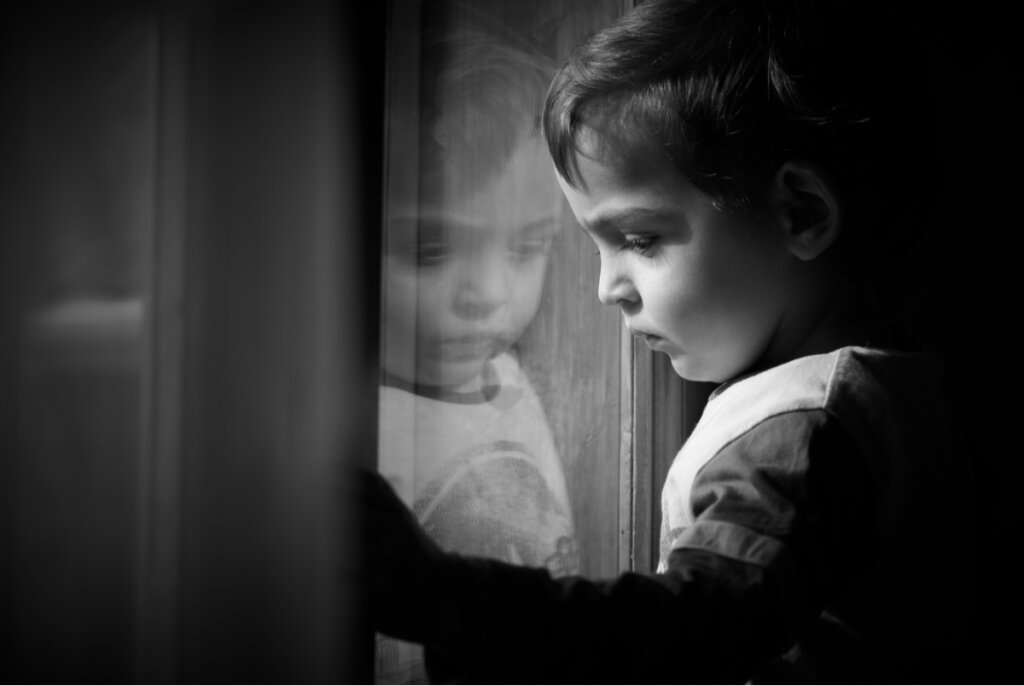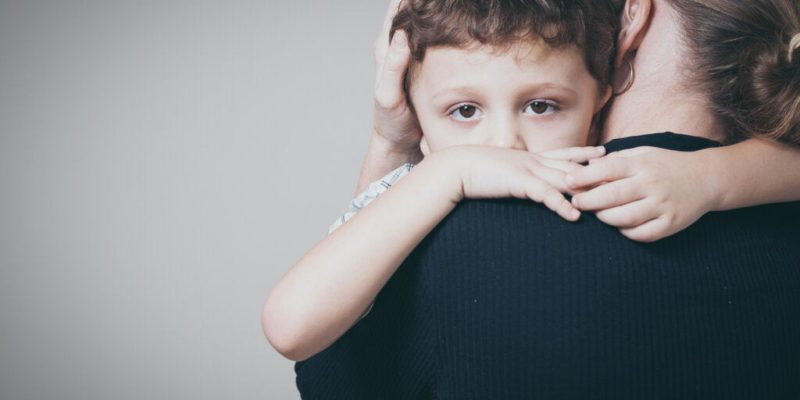If in early childhood a child learns to relate to violence, it’s likely that they’ll become violent in adulthood. Violence is a channel that some adults use to relate to others. Children learn from their parents. Therefore, if they see violence as a valid way of behaving, they imitate it.
Moreover, elements of child abuse can lead the child, as an adult, to be abusive. In fact, violence, as well as attachment style, can be transmitted from generation to generation.
According to attachment theory, humans are ‘preprogrammed’ to establish contact with other humans. The objective of these behaviors is to find social sources that provide them with protection and security. People develop attachments from an early age. As a matter of fact, the first bond of attachment is often established before the first year.
“Trust in the attachment figure is the basis of a stable and secure personality.”
-John Bowlby-
Internal working models (IWM)
Internal working models are the different guides, norms, guidelines, and models that guide our conduct. They oscillate between two dimensions: anxiety and avoidance behaviors. These dimensions can have two valences, one positive and one negative. Therefore, a total of four dimensions are obtained. These are negative anxiety and positive anxiety and negative avoidant and positive avoidant behaviors.
According to research conducted by Iria de la Osa Subtil and colleagues, the different attachment styles are: secure, preoccupied, dismissive, and fearful (Iría et al., 2022):
- The secure attachment style characterizes people with low anxiety and low avoidance.
- The preoccupied attachment style points to people with high anxiety and low avoidance.
- The dismissive attachment style represents people with low anxiety and high avoidance.
- The fearful attachment style signifies people with high anxiety and high avoidance.
The results of the study point to an association between insecure attachment style (ie, worried, dismissive, or fearful styles) and aggressive behaviors in general. More particularly, child maltreatment. On the other hand, a secure attachment style plays a protective role against violence.
“Insecure attachment style has been linked to a higher likelihood of intimate partner aggression.”
-Megan Oka-
Insecure attachment style and child abuse: a new nexus
An anxious attachment style encompasses the preoccupied and the fearful style, as discussed above. People with these attachment styles present a more pronounced tendency to psychological violence. In contrast, subjects with highly avoidant attachment styles, such as the fearful style are more prone to physical violence and sexual abuse.
Individuals with fearful attachment styles are most likely to have suffered traumatic events in their childhood. For example, they may have been rejected as children or suffered physical or psychological abuse. Consequently, they learned that these are normal ways of relating. For this reason, they have a tendency to relate aggressively, especially when they feel abandoned.
“Fearful attachment has also been linked to borderline personality disorder.”
-Amy Holtzworth-Munroe-

The insecure attachment style as a result of abuse is inherited and transmitted to offspring
Child abuse and attachment style are transmitted from generation to generation. Indeed, the way individuals learn to relate to their significant figures (usually parents) sets the stage for how they relate as adults. Consequently, children who grow up in the midst of the chaos of violence are more likely to react violently in their interactions as adults.
“A change in attachment style could improve interactions in intimate relationships.”
-Rachael A. Dansby Olufowote-
Theories
Among the theories that support this transmission are (Subtila et al., 2022):
- Social learning theory. Based on this hypothesis, infants learn to interact violently, by mimicking parental behavior. As such, parents act as ‘models’.
- Attachment theory. According to Bowlby, infants seek protection and security in their environment but are denied these needs by their parents. As a result, they develop attachment bonds based on anxiety, fear, and pain avoidance.
- The evolutionary-contextual model. According to its author, Capaldi, an upbringing based on fear, negligence (regarding the supervision of the minor), and coercion, lays the foundations for infants, when they become adults, to interact with other people in a violent way.
“Individual idiosyncrasies, in interaction with other contextual experiences, could favor or inhibit the intergenerational transmission of the use of intimate partner violence in adult life.”
-Immaculate Teva-
Subtila et al. (2022), discovered a firm association between having an insecure form of attachment and mistreatment. In fact, individuals with insecure attachment styles tend to mistreat and attack almost 18 percent more than those with secure attachment styles. Among insecure attachment styles, the fearful kind is linked to abuse in a more intense way.
Further research is required
Although these results are extremely interesting in understanding the intergenerational transmission of violence and attachment, they far from fully explain these phenomena.
But, it does appear that child abuse increases the probability of aggression in the future by almost nine percent. For this reason, we must continue to research the subject. It’ll help us develop intervention protocols that reduce the weight of the trauma of abuse in children and help them develop healthier attachment styles.
“Fearful attachment style has been linked to control of intimate partner behavior in abusive men.”
-James R. Mahalik-
The post The Link Between Insecure Attachment and Child Abuse appeared first on Exploring your mind.



















Comments